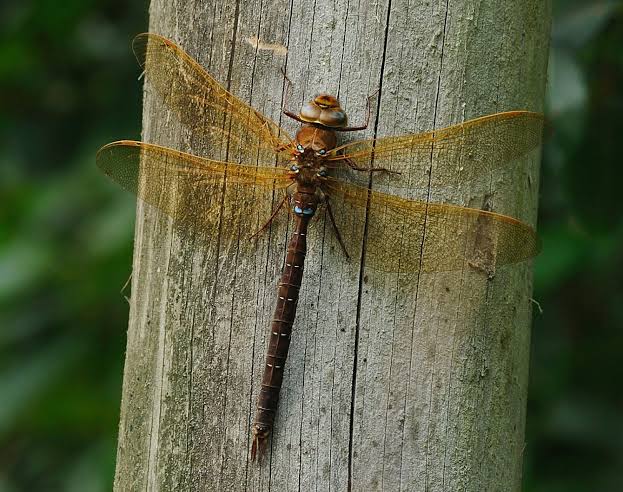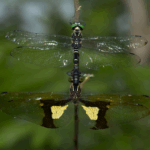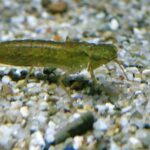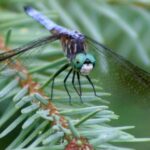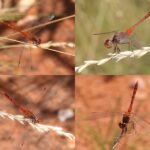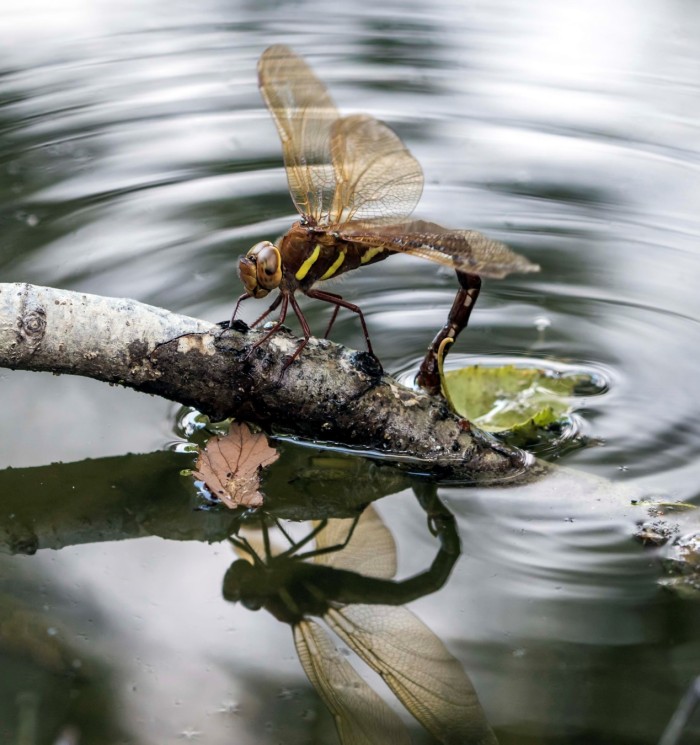
A large brown Hawker with obvious golden brown wings.
Male: small blue and yellow markings.
Female: small yellow markings.
Habitat
Breeds in standing or slow-flowing water laying its eggs in floating or emergent vegetation or timber. Hunts well away from water and may be found hawking woodland rides well into the evening.
Breeding in a wide range of habitats ranging from still waters to slow flowing rivers, and frequently encountered in urban areas.
Found in a wide range of well vegetated standing or slow flowing waters such as ponds, lakes, canals, ditches and slow flowing rivers.
Larval Information
- Hawkers have a long streamlined body-shape.
- 40-46mm.
- Banded legs.
- Stripes on the head and thorax.
- Broad labial mask.
- Abdominal lateral spines on segment 6.
Adult Identification
- Length: 73mm
- Brown body with yellow stripes on the side of the thorax.
- Brown tinged wings.
- Male: small blue and yellow markings, and a noticeable waisted appearance.
- Female: small yellow markings.
The brown hawker (Aeshna grandis) is a large dragonfly about 73 millimetres (2.9 in) long. It is a distinctive species and is easily recognised, even in flight, by its brown body and bronze wings. At rest, blue spots on the second and third segments of the male’s abdomen can be noticed; these are absent in female.
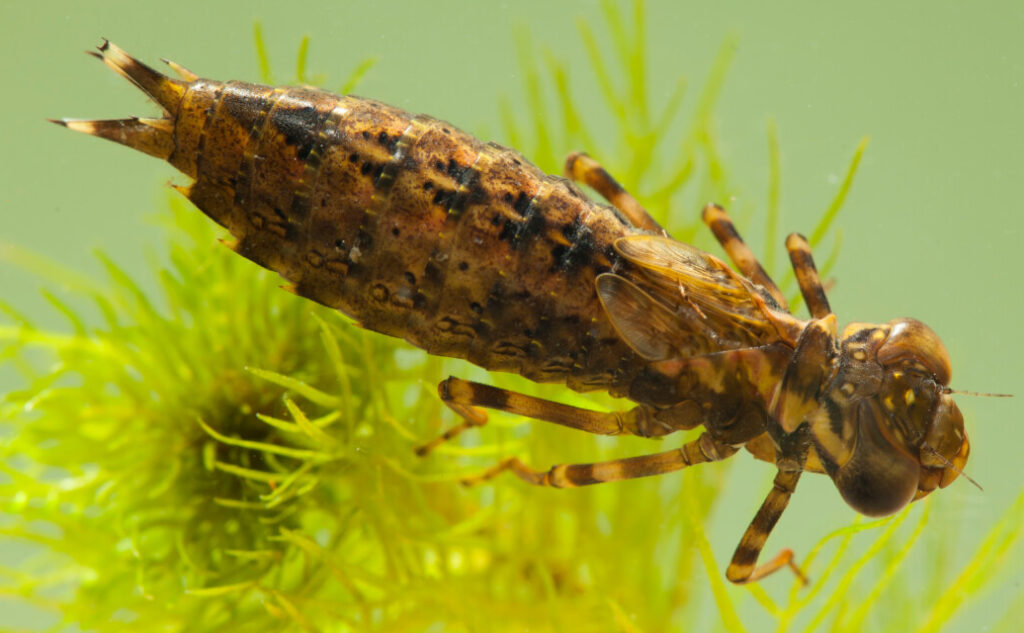
The flight time is mainly July to September. The nymph has stripes on the side of the thorax and distinct banding on the legs.
Distribution
Aeshna grandis is common in central and eastern Europe. In Europe, it can be found everywhere from Ireland to the Urals, with some exceptions like Scotland, northernmost Scandinavia and the Iberian and Apennine peninsulas. There is a population in the Balkans.
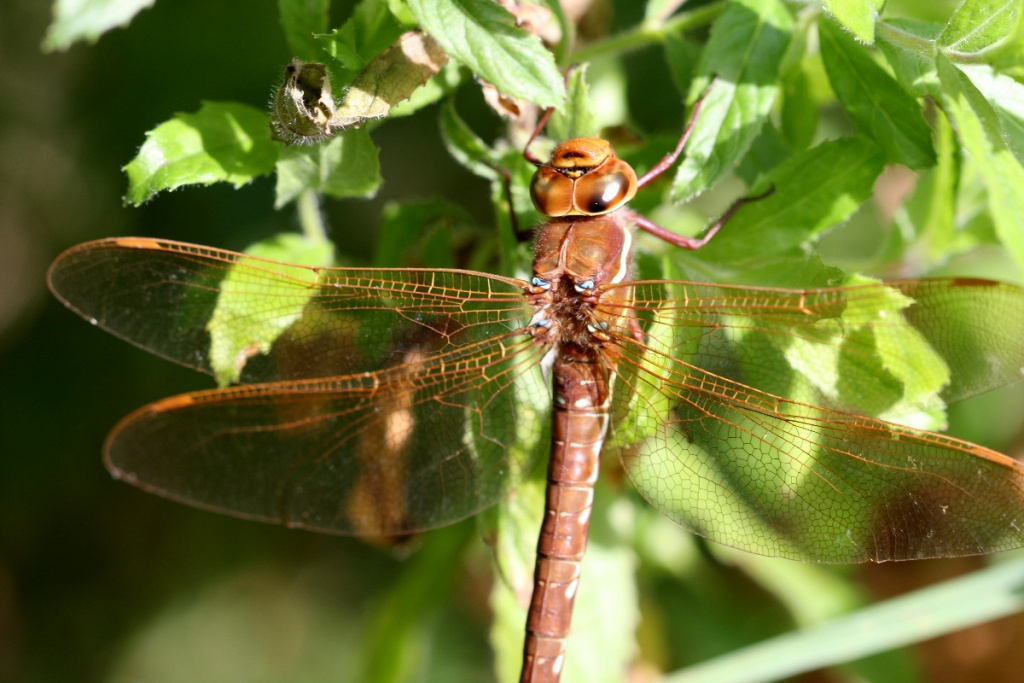
It is widespread in England but commonest in the south-east; local in Ireland and rare in Scotland. It is found on well-vegetated ponds, lakes and canals. It patrols a regular hunting territory around margins which is vigorously defended against intruders.
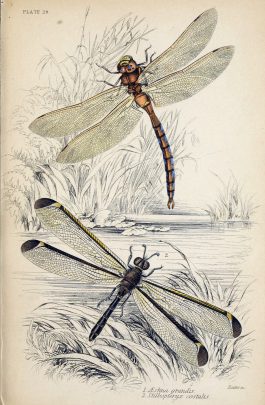
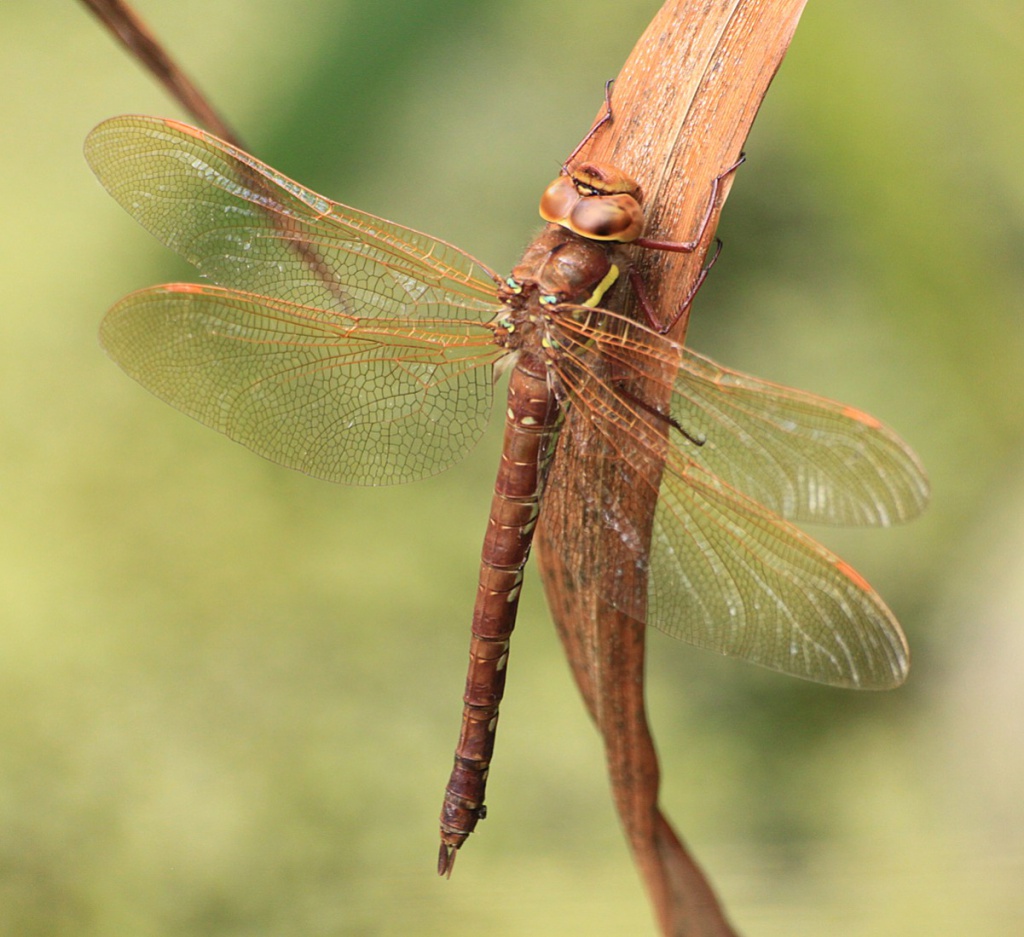
A common dragonfly of canals, marshes, reedbeds and lakes, the Brown hawker can be seen patrolling the water or ‘hawking’ through woodland rides. It is easily distinguished by its chocolate-brown body.
About
The Brown hawker is a large hawker dragonfly that is on the wing from the end of June through to September. It is a common dragonfly of well-vegetated canals, marshes and reedbeds, as well as lakes and flooded gravel pits. It can be spotted patrolling a regular hunting territory, which it will defend aggressively against intruders. It can be found some distance from its breeding grounds, hawking woodland rides late into the evening. Hawkers are the largest and fastest flying dragonflies; they catch their insect-prey mid-air and can hover or fly backwards.
How to identify
Even in flight, the Brown hawker can be easily recognised by its entirely chocolate-brown body and tiny yellow-and-blue markings. The wings are golden-orange in colour and the male has a noticeable ‘waisted’ appearance.
This large dragonfly is easily distinguished. Both sexes are a rich brown and have a distinctive golden-brown wings, which is often the most striking character of flying individuals. The male has two small blue spots on segment 2 and blue spots along the sides of the abdomen. Both sexes have yellow thorax stripes which are very bright yellow in males but duller in females.
The brown hawker is large common dragonfly found in Ireland, it is distinctive because of its chocolate brown colouring. They grow to 7.3cm long and have a wingspan of 10.2cm. Both males and females are similar looking but can be distinguished as males have blue dots on their abdomen while the females have yellow dots along their abdomen.
They can be found along canals, marshes and reed-beds they are called hawkers because of the way in which they hunt, they fly over wide areas and snatch the prey out of mid-air. They are very protective of their hunting grounds and defend them aggressively.
Female dragonflies can lay hundreds of eggs during their life, Hawkers lay Endophytic eggs they are elongated and are injected into plant stems, wood or mud near the water surface. As they develop they hatch and moult quickly finding safety in the water. Dragonflies spend most of their lives as larva eating as much as they can and moulting several more times.
Hawker dragonflies have larger eyes and hunt by sight among plants, they hunt other insect larvae, crustaceans, worms, snails, leeches, tadpoles and small fish. Depending on the temperature of the water and species they development of the larva can take about two years.
The final moult of the larvae takes place out of the water, it is triggered by day length and the temperature, hawker dragonflies emerge during the night after finding a secure spot they push out of the larval body and wait for their legs and wings to harden. This process can last up to three hours during this time they are most vulnerable to predation.
The newly emerged dragonflies, called Tenerals, feed for about a week before moving back to the water to breed. In general most species of dragonflies don’t last more than two weeks, but some live for up to 6 weeks. (Smallshire & Swash, 2014) They fly from June to September.
In Irish mythology it’s believed that fairies use dragonflies to travel from place to place. In some cases it’s believed that dragonflies are fairies in disguise!

